How to Develop Good Money Tools So You Can Be As Generous As You Want

I know many kind and generous people who wish to give money to organizations or causes they support, or simply other people in the community who are in need. However, sometimes being clear on how much you can afford to donate is difficult.
To clear this up, you need to develop a solid financial base for yourself. I’m talking about using a spending plan, a savings plan, and money mapping to get clear on where your money is going. Let’s look at how each of these three tools can help you give more easily:
Spending Plan
First, you need to know how much you’re spending and where it’s going. Take a walk through your income and expenses and figure out how much you’re saving, if you are saving. The point of developing a spending plan (also known by the less-fun-sounding-term “budget”) is to get clear on what your spending is like right now, and how it compares to your income. When you look at this, you can see what your spending priorities currently are, and you can start to think about that critically. Do you really want to eat takeout food every week, or would you rather be able to donate that $35 to a conservation campaign like Protect Juristac? Looking at your spending and weighing your priorities can make room for the giving you want to do. To develop a good spending plan, check out my article with ideas and strategies here.
Savings Plan
Saving money gives you serious options, whether you’re saving for an emergency fund or a big purchase. You can also decide to dedicate a portion of your savings directly to giving. Maybe, you decide to save 5% of your income every month and donate it to the COVID-19 Hopi Relief Fund at the end of the year. Whether the giving comes out of your savings or your spending plan, having both gives you a fuller picture of how you can spend, give, and save for your goals. You can read more about creating a savings plan for yourself here.
Money Mapping
Once you’ve got the spending and the saving figured out, you can put it all together into a money map! Money mapping is a visual tool for organizing your own money system. It’s super helpful for both your business and personal finances. I’ve talked about the how-to of money mapping quite a bit on this blog, so I won’t go into detail. I recommend reading my full series on money mapping, and especially How to Use Money Mapping to Give Back. The big pro of money mapping is that you can visually parse out how you will allocate for giving money. Whether it’s coming out of your business finances, your monthly living expenses, or you’re saving a big sum, creating a money map helps you see that and stick to it.
Want to Give? Get Organized!
 The bottom line here is that donating money from a solid financial base requires getting organized. You need to go over your financial priorities and see what kind of money you have to work with. From there, you can make an informed and generous decision about where to put your money, without putting yourself in dire financial straits. I hope you found this article helpful. Currently, I have a few openings in my practice for some personal finance coaching clients, so if you’d like to work closely on your personal finances and develop a giving plan with support, reach out to schedule a free consultation!
The bottom line here is that donating money from a solid financial base requires getting organized. You need to go over your financial priorities and see what kind of money you have to work with. From there, you can make an informed and generous decision about where to put your money, without putting yourself in dire financial straits. I hope you found this article helpful. Currently, I have a few openings in my practice for some personal finance coaching clients, so if you’d like to work closely on your personal finances and develop a giving plan with support, reach out to schedule a free consultation!
Happy giving!
Angela
This blog post is a re-publishing of the original article, “How to Make Donating Way Easier on Your Finances,” published in November 2020. For more articles on this topic, check out the “giving” tag.





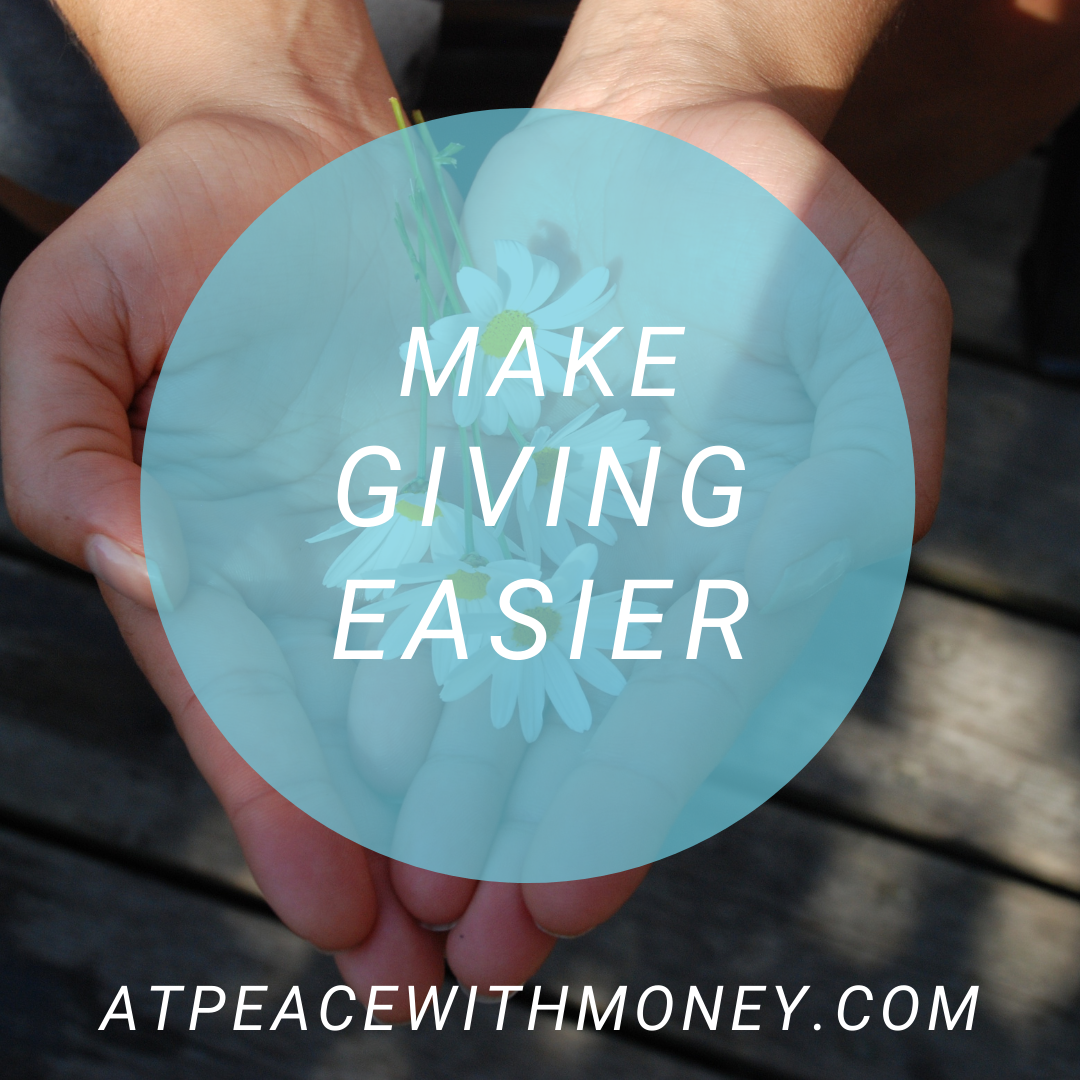

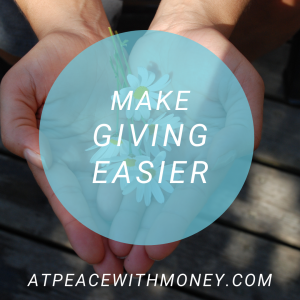 The bottom line here is that donating money from a solid financial base requires getting organized. You need to go over your financial priorities and see what kind of money you have to work with. From there, you can make an informed and generous decision about where to put your money, without putting yourself in dire financial straits. I hope you found this article helpful. Currently, I have a few openings in my practice for some personal finance coaching clients, so if you’d like to work closely on your personal finances and develop a giving plan with support, reach out to
The bottom line here is that donating money from a solid financial base requires getting organized. You need to go over your financial priorities and see what kind of money you have to work with. From there, you can make an informed and generous decision about where to put your money, without putting yourself in dire financial straits. I hope you found this article helpful. Currently, I have a few openings in my practice for some personal finance coaching clients, so if you’d like to work closely on your personal finances and develop a giving plan with support, reach out to 



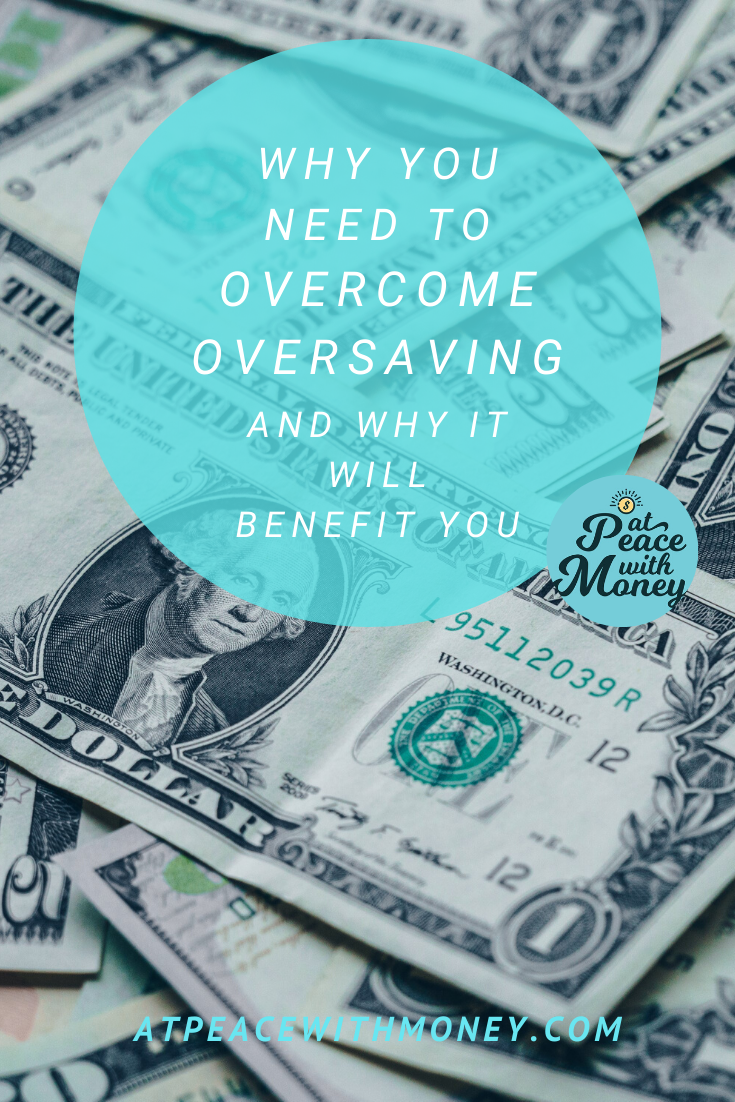
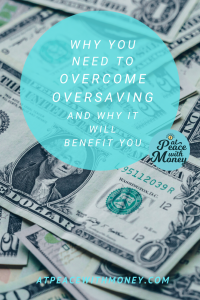 Doing some emotional work around money can also really help you clear up your oversaving. I recommend reading
Doing some emotional work around money can also really help you clear up your oversaving. I recommend reading 



 Nowadays, many people have a side-hustle, whether it’s a creative passion project or housesitting on the weekends. Either way, keep track of that money! How much do you earn? Knowing is important, and it’s also important to know where that money is going. Have a purpose for your side-hustle income and set it aside regularly. You might be earning money to travel, save for retirement, or set up your emergency fund. Whatever it is, make sure your side hustle has a “why” – you can read more about
Nowadays, many people have a side-hustle, whether it’s a creative passion project or housesitting on the weekends. Either way, keep track of that money! How much do you earn? Knowing is important, and it’s also important to know where that money is going. Have a purpose for your side-hustle income and set it aside regularly. You might be earning money to travel, save for retirement, or set up your emergency fund. Whatever it is, make sure your side hustle has a “why” – you can read more about 
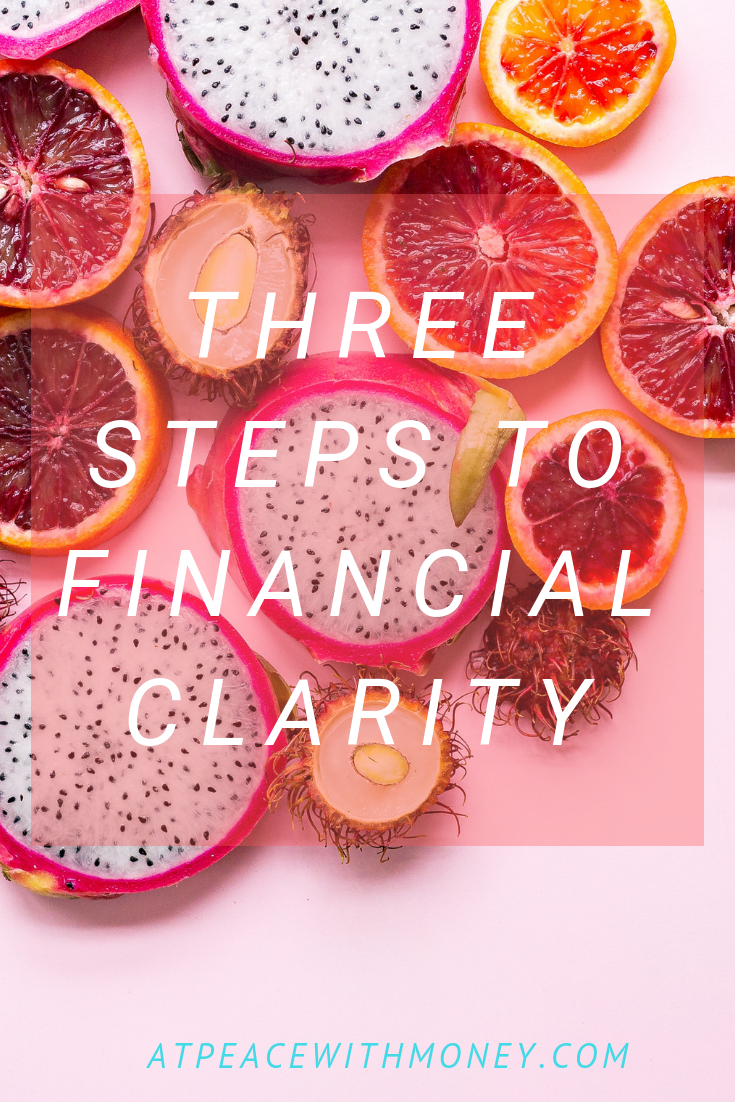

 Now that you know where you are and where you’re going, it’s time to figure out how you’ll get there. This is the step where strategy comes in. Based on all the information you’ve already looked at during Step 2, you should be able to determine what will help you get to your destination. Whether that’s
Now that you know where you are and where you’re going, it’s time to figure out how you’ll get there. This is the step where strategy comes in. Based on all the information you’ve already looked at during Step 2, you should be able to determine what will help you get to your destination. Whether that’s